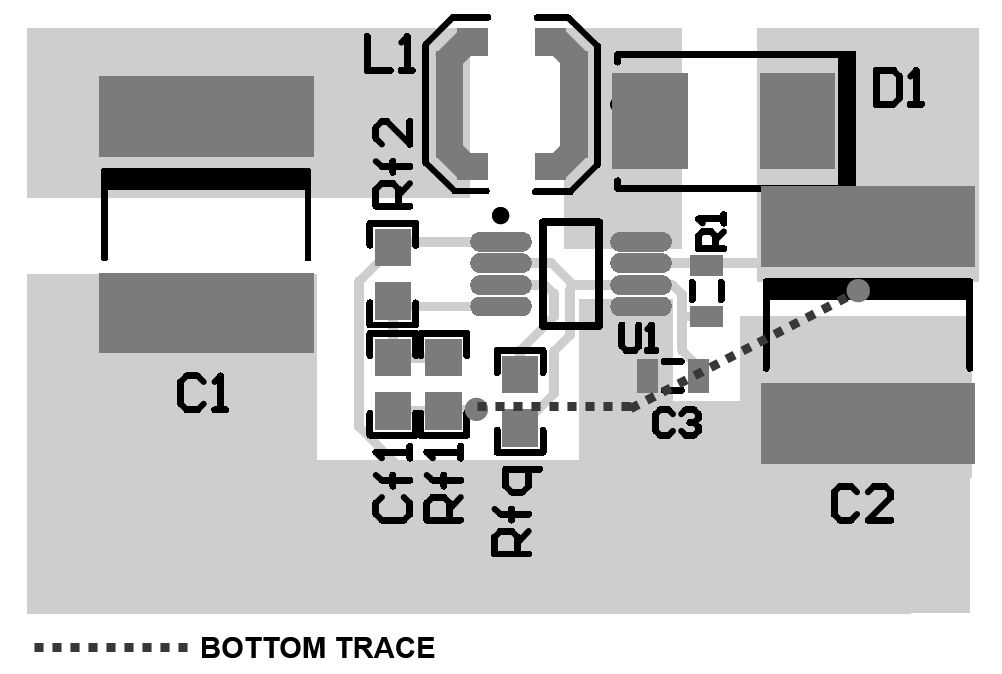SNVS033D May 2004 – November 2015 LM2621
PRODUCTION DATA.
- 1 Features
- 2 Applications
- 3 Description
- 4 Revision History
- 5 Pin Configuration and Functions
- 6 Specifications
- 7 Detailed Description
-
8 Application and Implementation
- 8.1 Application Information
- 8.2 Typical Applications
- 9 Power Supply Recommendations
- 10Layout
- 11Device and Documentation Support
- 12Mechanical, Packaging, and Orderable Information
10 Layout
10.1 Layout Guidelines
High switching frequencies and high peak currents make a proper layout of the PC board an important part of design. Poor design can cause excessive EMI and ground-bounce, both of which can cause malfunction and loss of regulation by corrupting voltage feedback signal and injecting noise into the control section.
Power components - such as the inductor, input and output filter capacitors, and output diode - should be placed as close to the regulator IC as possible, and their traces should be kept short, direct and wide. The ground pins of the input and output filter capacitors and the PGND and SGND pins of LM2621 should be connected using short, direct and wide traces. The voltage feedback network (RF1, RF2, and CF1) should be kept very close to the FB pin. Noisy traces, such as from the SW pin, should be kept away from the FB and VDD pins. The traces that run between Vout and the FB pin of the IC should be kept away from the inductor flux. Always provide sufficient copper area to dissipate the heat due to power loss in the circuitry and prevent the thermal protection circuitry in the IC from shutting the IC down.
10.2 Layout Example
 Figure 19. LM2621 PCB Layout
Figure 19. LM2621 PCB Layout